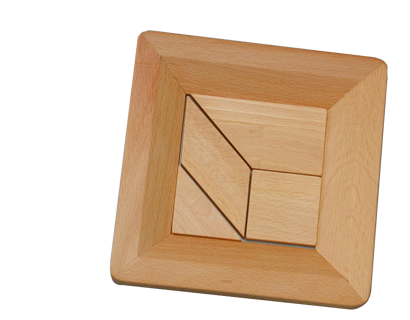Bob MAREK: Tactile Graphics Workshop Programme
The Hungry Fingers way to tactile graphics: Simple tools for explaining complex problems.
Workshop duration
The duration of the workshop depends on the amount of time devoted to different components. An outline of the main challenges and solutions connected with introducing congenitally blind learners to tactile graphics can be “handled” in one day. Additional time is needed for getting hands-on experience with the resources and for learning “how to make the most of them” in various educational contexts. A solution which has proved effective is to organize a one day introductory lecture type presentation for a larger group of teachers/parents followed by 3 days work in small groups. The number of participants depends on the number of sets of resources which are available – ideally not less than one set for a group of five participants.
Additional time is needed for implementation of the newly acquired skills (Introducing tactile graphics to totally blind learners.)
- Presenter: Prof. Boguslaw ‘Bob’ Marek Ph.D.OBE
- Affiliation: The John Paul II Catholic University of Lublin and Hungry Fingers – Educational Tools for Young Learners with Special
- Needs. www.hungryfingers.com e-mail: hungryfingers@hungryfingers.com
- Private e-mail: forblindkids@gmail.com
- University e-mail: bmarek@kul.pl
Workshop outline
Aims:
- To address the notoriously difficult problem of introducing tactile graphics to young congenitally blind learners.
- To raise the awareness of the problems underlying the difficulties which totally blind learners experience with tactile graphics.
- To assist teachers of different subjects, who need or might benefit from introducing tactile graphics, with making meaningful adaptations of drawings, maps and diagrams.
- To help design tactile graphics which will be both meaningful and enjoyable to young totally blind learners.
- To acquaint teachers with tools designed for young learners, which facilitate understanding of difficult concepts based on spatial relations.
- To acquaint teachers with ways of increasing the child’s confidence with tactile graphics
- - To show how a meaningful contact with tactile graphics may increase the child’s understanding of difficult concepts, independence and confidence with spatial relations, orientation and mobility.
Prerequisites:
Basic knowledge of different types and implications of visual impairment. For participants new to the field a one day introductory workshop would be beneficial. Knowledge of Braille – useful.
Specific problems to be discussed:
- Gaps in the knowledge of the ‘sighted’ world. Evidence from the language of totally blind children.
- Concepts related to space and visual experience. What concepts can be illustrated and explained with tactile graphics.
- Examples of drawings made by totally blind children and adults.
- Which is easier – to draw or to read tactile drawings?
- Why some VI children show no interest in drawing and in drawings?
- Developing a step-by-step course in tactile graphics for young totally blind learners.
- From lines to complex geometric shapes.
- Drawing and interpreting drawings of flat objects.
- Explaining the relation between three-dimensional objects and two-dimensional drawings.
- Symmetry and rotation.
- Drawings of objects observed from different vantage points
- From real objects and collage to books with tactile drawings.
- Human body – drawing and recognizing drawings of people.
- Before a blind child can read a map.
- From table mat to “outer space” - designing orientation and mobility activities.
- Different methods of producing tactile graphics for different purposes – “Braille” embossing, German film, swell paper, thermoforming and thermography.
- Listen and touch books – tactile activity books.
- Adding sound to tactile graphics – Talking Pens and Talking Tablets
- Playing and learning with tactile graphics - games for concept and language development
- Is tactile graphics always the best solution? Analysis and evaluation of “good” and “bad” tactile illustrations.
- Multiple choice frame for Braille and tactile graphics activities.
- Magic quiz board
- Accessible crossword puzzles
- Grids and mazes for Braille literacy.
Stress free testing:

© Copyright Hungry Fingers ™ 2011


